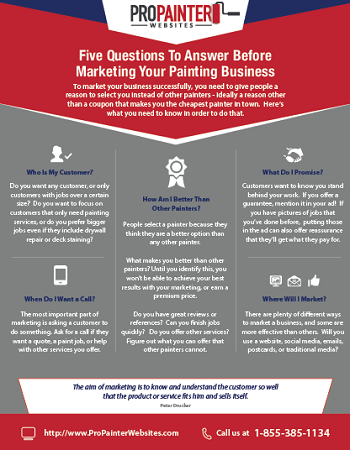Discover How Seasonal Influences Can Impact The Efficiency Of Commercial Outside Paint And Learn The Most Desirable Times To Make Sure Resilient Results For Your Project
Discover How Seasonal Influences Can Impact The Efficiency Of Commercial Outside Paint And Learn The Most Desirable Times To Make Sure Resilient Results For Your Project
Blog Article
Web Content Develop By-Leach Bagger
When you're preparing a business outside painting task, seasonal factors can make or break your results. You'll want to think about how temperature level and moisture effect paint application and drying times. Selecting house painter near me can guarantee your paint sticks effectively and lasts longer. But which periods are absolutely the best for this type of work? Let's explore exterior painting toronto that can influence your project's success.
The Influence of Temperature on Paint Application
When you're preparing an industrial outside paint task, the temperature can considerably impact how well the paint sticks and dries out.
Preferably, you want to paint when temperature levels vary in between 50 ° F and 85 ° F. If it's too chilly, the paint might not heal properly, resulting in concerns like peeling off or fracturing.
On the flip side, if it's also warm, the paint can dry also rapidly, preventing correct bond and resulting in an unequal surface.
You need to also consider the moment of day; morning or late afternoon uses cooler temperatures, which can be extra desirable.
Always check the producer's recommendations for the specific paint you're making use of, as they commonly offer advice on the ideal temperature level variety for optimum outcomes.
Humidity and Its Result on Drying Times
Temperature isn't the only ecological element that influences your business outside painting task; moisture plays a considerable role too. High humidity degrees can decrease drying out times dramatically, influencing the overall quality of your paint job.
When the air is saturated with wetness, the paint takes longer to heal, which can lead to concerns like bad attachment and a higher danger of mold development. If you're repainting on an especially moist day, be planned for extensive wait times between coats.
It's vital to check local climate condition and strategy accordingly. Preferably, aim for humidity levels between 40% and 70% for ideal drying out.
Maintaining these factors in mind ensures your task remains on track and delivers an enduring coating.
Best Seasons for Commercial Outside Painting Projects
What's the best time of year for your commercial outside paint projects?
Spring and very early loss are generally your best options. Throughout straightline.com , temperatures are mild, and moisture levels are often lower, creating optimal problems for paint application and drying out.
Prevent summertime's intense heat, which can trigger paint to completely dry too swiftly, resulting in bad bond and finish. In a similar way, winter season's cool temperatures can hinder correct drying out and healing, running the risk of the longevity of your paint job.
Aim for days with temperatures between 50 ° F and 85 ° F for ideal results. Bear in mind to check the neighborhood weather prediction for rainfall, as wet problems can spoil your job.
Preparation around these elements guarantees your paint task runs smoothly and lasts longer.
Conclusion
To conclude, planning your business exterior paint tasks around seasonal considerations can make a substantial difference in the result. By scheduling job during the optimal temperatures and humidity levels, you'll ensure far better attachment and drying out times. Bear in mind to watch on neighborhood weather forecasts and choose the correct time of year-- springtime and early loss are your best bets. Taking these actions will certainly assist you accomplish a long lasting and professional coating that lasts.
